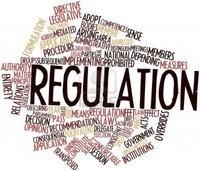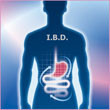The advent of recombinant DNA-technology ushered in the development of novel therapeutic protein products that have become mainstays of treatment regimens against cancer, inflammatory disorders and other serious diseases and conditions. Recombinant therapeutic proteins are typically large, complex molecules that are produced in cultured cells and manufactured using complex, multistep purification processes. Despite some of these products being ‘off-patent’ for years, they remain among the most expensive pharmaceuticals in the US and the world. One approach that governments across the globe have taken to reduce healthcare costs is to give regulatory authorities the ability to approve biologicals using an abbreviated licensing pathway that includes achieving the rigorous standard of demonstrating ‘biosimilarity’ with an already approved biological product.
As part of the Affordable Care Act of 2010, Congress passed the Biologics Price Competition and Innovation Act (BPCI Act) which granted the US Food and Drug Administration (FDA) the authority to approve biosimilars and interchangeable biologicals, including recombinant therapeutic protein products, using an abbreviated licensure pathway. As described in the BPCI Act, biosimilarity means that the ‘the biological product is highly similar to reference product notwithstanding minor differences in clinically inactive components’, and ‘there are no clinically meaningful differences between the biological product and the reference product in terms of the safety, purity and potency of the product’.
What is meant by an abbreviated approval pathway? The approval pathway for generics is an example of an abbreviated approval pathway. In order to support approval of a generic drug, the generic drug manufacturer can rely upon FDA’s previous finding of safety and effectiveness of an already approved drug [the reference listed drug (RLD)] if the proposed generic drug is the ‘same’ as the RLD, meaning, among other things, the active pharmaceutical ingredient is the ‘same’ as the RLD and it is bioequivalent to the RLD.
The approval pathway for biosimilars is a different abbreviated approval pathway which also allows the manufacturer of the proposed product to rely on, among other things, publicly-available information regarding FDA’s previous determination that the reference product is safe, pure and potent. Use of the generic drug approval pathway is not appropriate for approval of therapeutic protein products for a number of reasons, including the scientific challenges involved in demonstrating that the proposed product has ‘the same’ active ingredient as the listed drug it references.
Because of minor variability inherent to the protein expression process in cells, each protein molecule produced in a batch cell culture system cannot necessarily be expected to be ‘the same’ in terms of secondary or tertiary structure. While each protein molecule produced is initially expected to have the same primary amino acid sequence, proteins expressed in cells will undergo post-translational processing before reaching their final form. As a result, the potential for natural variations to occur during post-translational processing exists, such that, while the vast majority of protein molecules in a given dose of an approved recombinant therapeutic protein product may be the same (whether it be a reference product or a biosimilar product), microheterogenity in their secondary and tertiary structure is expected to occur. For example, monoclonal antibodies are glycosylated proteins, and each glycoform that is attached to any given protein molecule has the potential to be composed of different types and sequences of glycans.
Since the passage of the BPCI Act, FDA has detailed scientific considerations for demonstrating biosimilarity in Guidance for Industry documents and how these considerations serve as the foundation for FDA’s approach to reviewing licensing applications for biosimilar products. The important concepts from these guidance documents have been summarized in the paper by Lemery et al. [1]. As of 27 April 2017, FDA has approved applications for five biosimilar products. If a major goal of the BPCI Act is realized, these high quality therapeutic protein products should play an important role in increasing access to these essential therapies and helping to bring down the costs of pharmaceuticals and health care in the US.
Conflict of interest
The authors of the research paper [1] did not provide any conflict of interest statement.
Abstracted by M Stacey Ricci, MEng, ScD, US Food and Drug Administration.
Related article
Biosimilars in the treatment of inflammatory bowel disease
Reference
1. Lemery SJ, Ricci MS, Keegan P, McKee AE, Pazdur R. FDA’s approach to regulating biosimilars. Clin Cancer Res. 2017;23(8):1882-5.
Permission granted to reproduce for personal and non-commercial use only. All other reproduction, copy or reprinting of all or part of any ‘Content’ found on this website is strictly prohibited without the prior consent of the publisher. Contact the publisher to obtain permission before redistributing.
Copyright – Unless otherwise stated all contents of this website are © 2017 Pro Pharma Communications International. All Rights Reserved.








 0
0











Post your comment